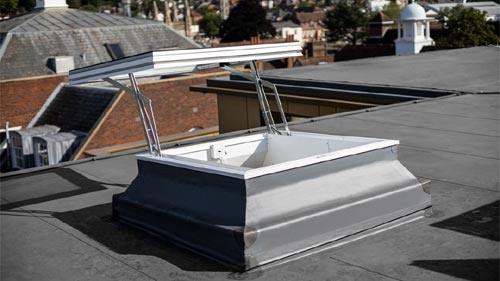
First of all, you need to determine what type of wall you are soundproofing, is it a party wall or an internal wall? Then you will need to decide how much space you are willing to give to your soundproofing. If you are in the construction phase, it is much easier, but any added on soundproofing will require the wall to be made a little thicker.
You should also be aware that it is easier to soundproof a wall that is made of brick than a breeze block wall. You may need to remove the existing plaster if it is a dot and dab application.
To soundproof a wall you need to reduce the sound that is transferring through it by adding mass, density, and creating separation. The sound needs to be both blocked and absorbed to stop it from transferring through a wall.
A combination of acoustic insulation slabs to absorb sound waves, high density panels to block sound and sound breaker bars to create separation will achieve the best soundproof solution.
Soundproofing an existing wall
You may be worried that adding soundproofing to an existing wall will mean a loss of space. This is not always the case. You can achieve soundproofing without compromising on your living space with slim wall soundproofing panels.
These slim panels deaden the sound that travels between rooms from things such as TVs, conversation and music. They can work both on party walls between you and your neighbour and internal walls within your home.
An acoustic panel is a stand-alone soundproofing board that will reduce noise pollution up to 50 decibels. They are quick and easy to install and can be added to existing walls that have already been plastered or decorated. These panels come in a very slim 22.5 mm thickness so that you don’t compromise on valuable living space.
The Noisestop 2 panel is the only soundproof panel that can be bonded directly to brick walls. This panel can be fitted with a dot and dab application onto bare brick or finished walls. These panels soundproof up to 46 decibels.
Soundproofing party walls
If you have very noisy neighbours, you may wish to have a higher level of soundproofing for your walls. We would recommend that you install a multi-layer system for this to ensure both airborne and impact noises are reduced.
The best materials to use are 50 mm DFM acoustic insulation over the stud wall with sound breaker bars, an acoustic panel and finish with acoustic sealant. Once this has all been added to your wall, you will have a small amount of space loss, this system is around 83 mm thick.
You could opt for a slimmer system that is only 43 mm thick by using 25 mm DFM acoustic insulation, acoustic panels and acoustic sealant. Foregoing the sound breaker bars in this system helps to reduce the space loss as does using the thinner acoustic insulation.
Soundproofing stud walls
Stud wall kits come with a variety of thicknesses of acoustic insulation to suit the depth of your existing stud wall. You can combine any of the acoustic insulation products when building a stud wall that is soundproofed.
A stud wall kit combines acoustic insulation slabs, sound breaker bars, soundproof panels, acoustic plasterboard, and acoustic sealants to reduce the noise travelling between rooms. Insulating your stud walls with this combination is the best way to protect your home from noise pollution.
A note about flanking
Sound travels around a building through the cavities it finds. One of the easiest ways for the sound to travel is between the floor cavities. This is known as a flanking sound.
So when you are soundproofing your walls, you may want to consider whether you are getting sound transferring through floor cavities. If your floor joists are shared with your neighbour, then sound can easily pass through into your property.
It may be worth you protecting against this flanking sound by insulating between the floor joists. This can be done very easily by removing a few floor boards that are against the wall and filling the cavity with acoustic insulation slabs. You only need to use the width of the slab or 600 mm to reduce this flanking noise.
Whatever your budget or skill level, there is a solution to suit. It all depends on how much noise pollution you are suffering with and how much impact it is having on your daily life. There are DIY kits and professionally fitted versions, contact a specialist at Noise Stop to find out what will suit your needs best.




